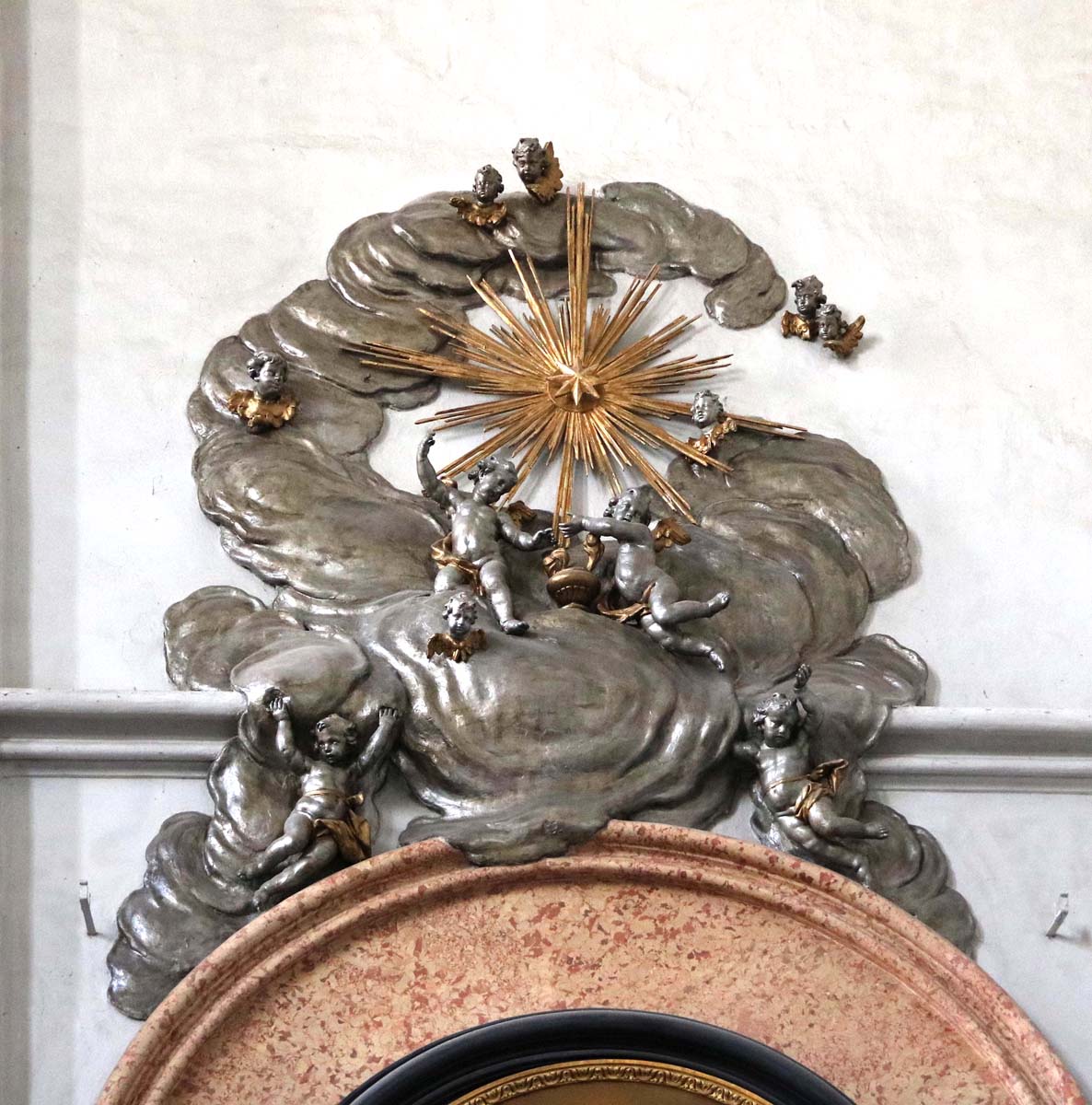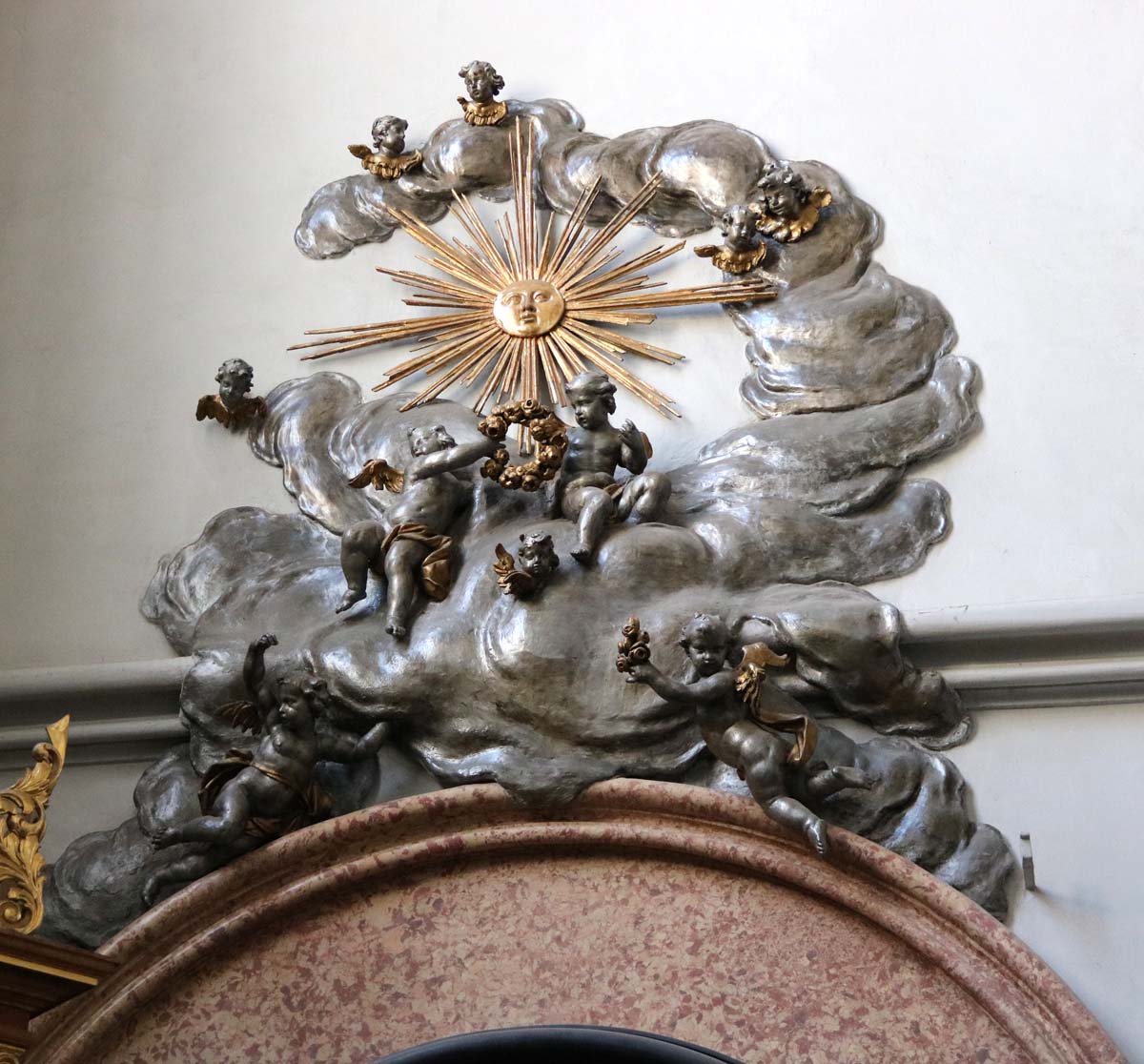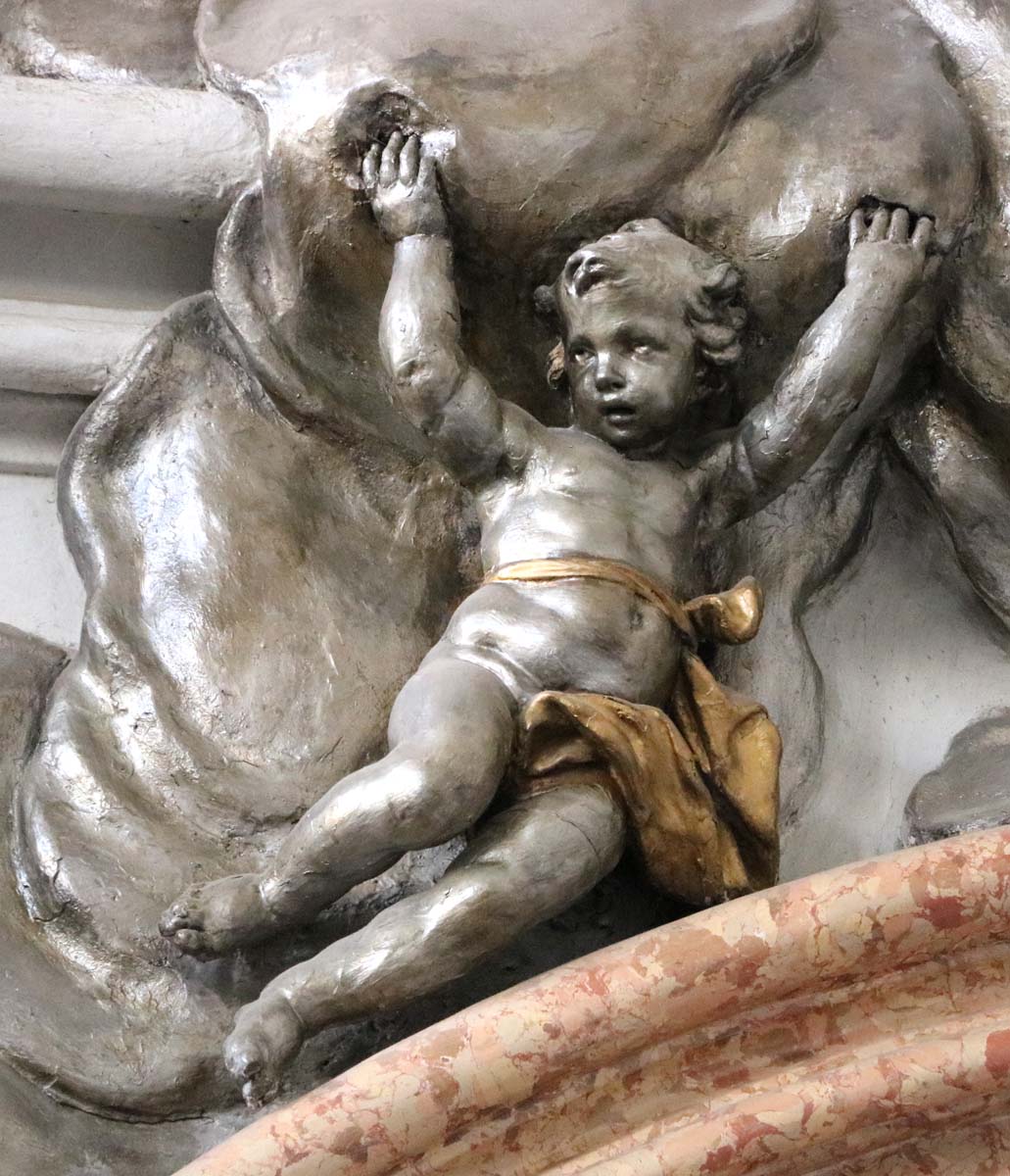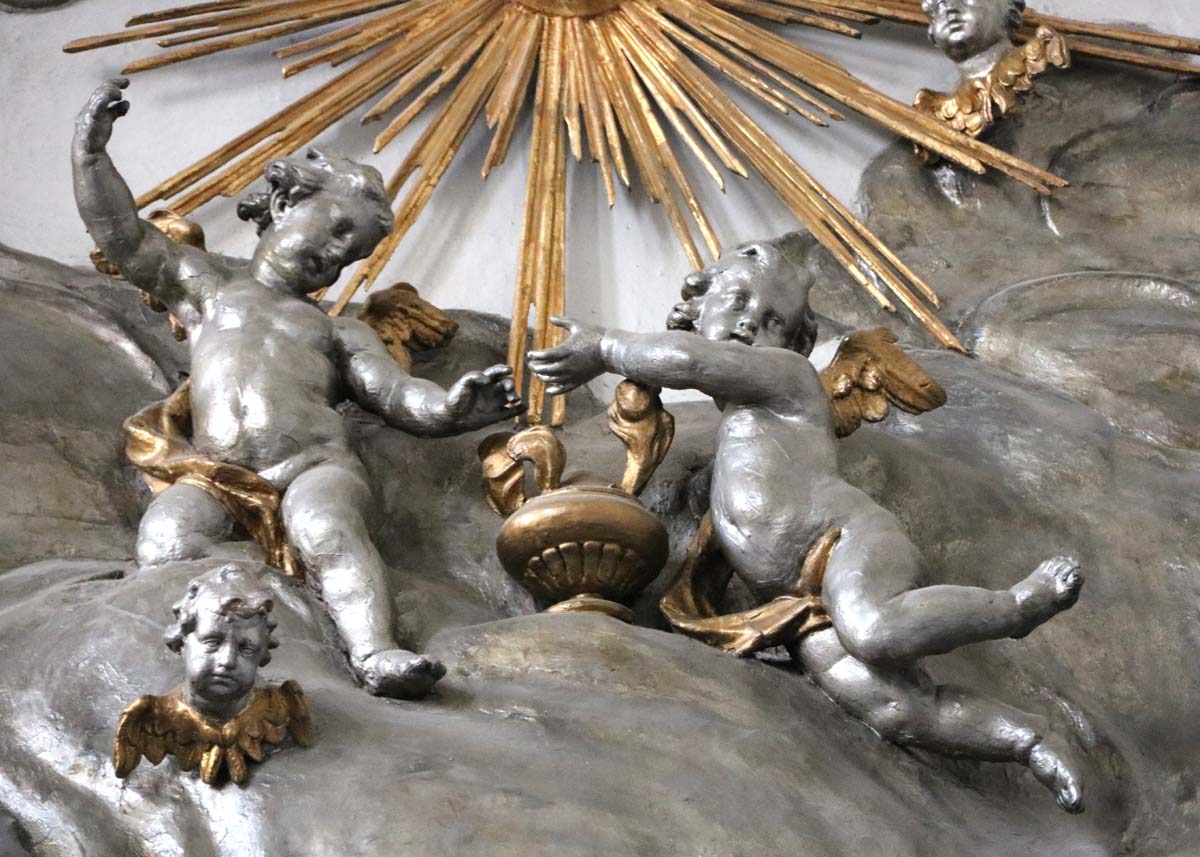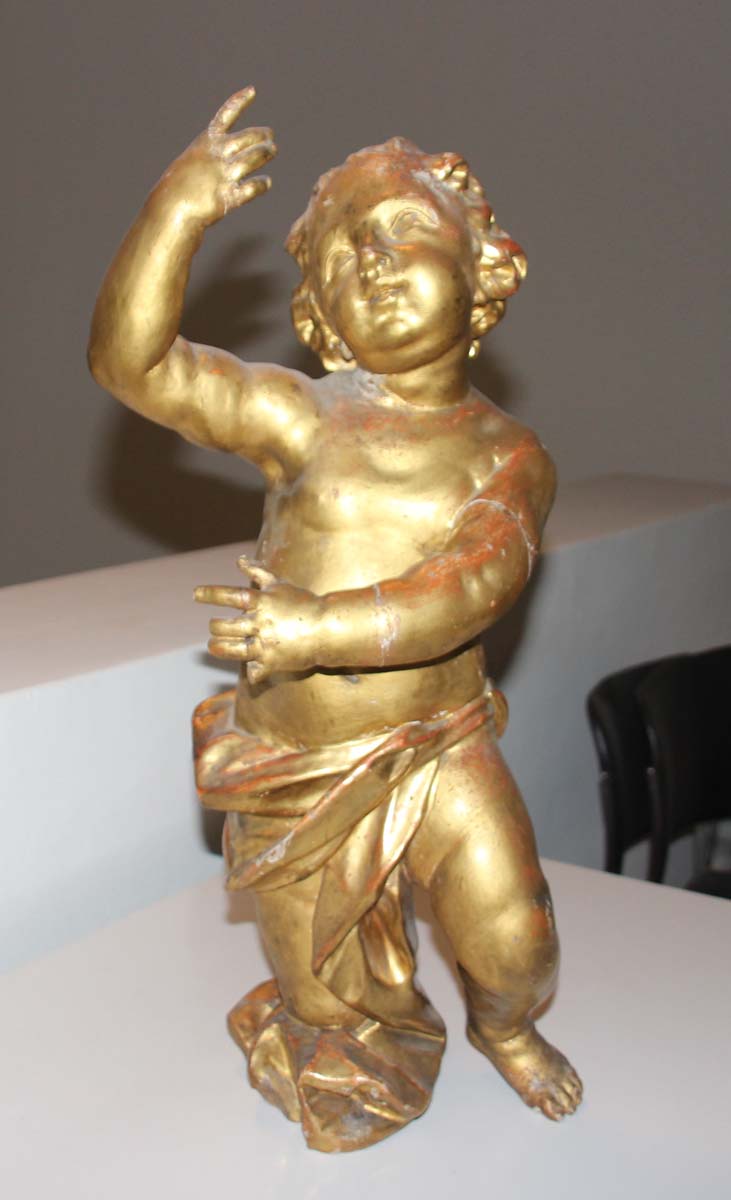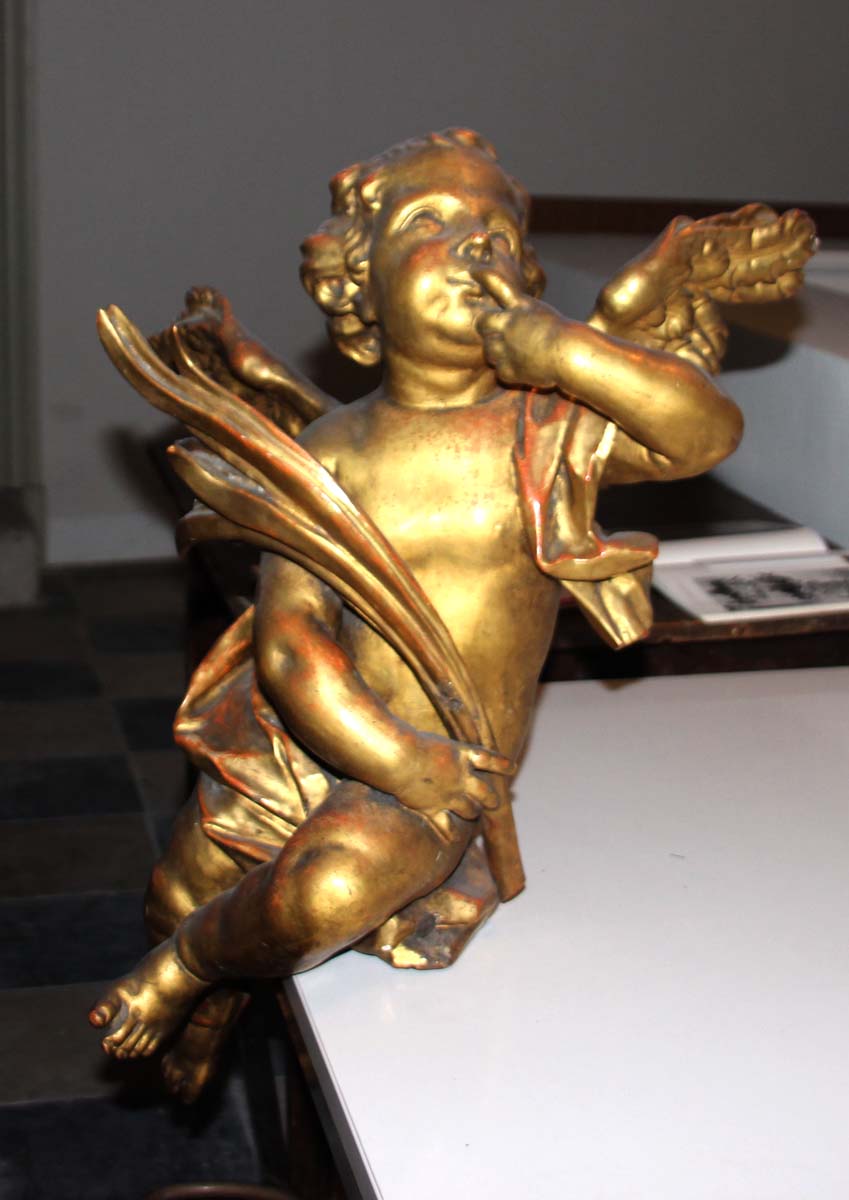Location
Austria, Vienna
Monastery and Parish Church of St Augustine (Augustinerkirche)
Original location:
Austria, Vienna
Benedictine Abbey Church of Our Lady of Monteserrato (Schwarzspanierkirche)
Artwork
Decorations from the Side Altars of the former Schwarzspanierkirche in Vienna
Type
Sculptural decoration
Critical History
According to Lippert, his earliest biographer in 1772, Johann Baptist Straub made the decorations for four side altars of the former abbey church of the Benedictine order of Montserrat for Abbot Anton Vogl von Krallern.1 The paintings on the side altars are signed (Daniel Gran, Martino and Bartolomeo Altomonte) and dated 1736, when Straub had already left Vienna. In 1737 the young architect Johann Jakob Küchel visited the church two years before its consecration and noted that the (already finished) side altars were of a completely new kind without costly architecture.2 Ten years later the painter Paul Troger also noted the "side altars without columns."3 During the Dissolution of the Monasteries under Emperor Joseph II. in 1784, the former Abbey Church of Our Lady of Monteserrato was profaned, and the side altars were dismantled and dispersed. Four huge paintings were brought to Santa Maria della Neve, the former Minorite church in Vienna, after 1784 used by the Congregatione Italiana. The framing decoration carved by Straub was partly reused by court architect Johann Ferdinand Hetzendorf von Hohenberg, who was responsible for both churches, for the attic above the two side altars at the triumphal arch of St. Augustine.4 After his return to Munich Johann Baptist Straub repeated and developed his Viennese side altars without architecture, eg. in Dießen or St. Michael in Munich, Berg am Laim.
Construction / Execution
The original layout of the altars, with the framed altarpieces fixed directly to the wall, surrounded with asymmetrical drapery, sculptures (putti with attributes) and glorioles with cherubs and clouds in the attic, is not known but probably the side altars of the Schwarzspanierkirche resembled Straub's later alters in Bavaria (Dießen 1738-40, Berg am Laim 1743/44).5 The putto with a cross and another putto with a palm, making a gesture of silence, can be convincingly contexted with Bartolomeo Altomontes painting (The Glory of St. John of Nepomuk, 1736), they must have belonged to the altar of St John of Nepomuk.6
Components
- Sculpture
- Author: Johann Baptist Straub (Wiesensteig ca. 1704 – Munich 1784)
- Completed: ca. 1730 – ca. 1734
- Patron(s): Anton Vogl von Krallern, abbot
- Technique(s): wood carving
- Material(s): wood
- Polychromy
- Completed: ca. 1730 – ca. 1739
- Patron(s): Anton Vogl von Krallern, abbot
- Polychromy
- First repolychromy
- Completed: ca. 1784 – ca. 1785
- Material(s): gold, silver
Comment
In 1974, Steiner documented five small angels with attributes in the parish storage, today only two can be found. A comparison with the photos he took in the 1970s proves that the remaining putti have been damaged since his monograph on Straub was published; the putto with the cross lost both his wings and part of his fingers when the cross was sawn off.7
Images
- Vienna, St Augustine, decoration above the right altar at the triumphal arch (photo by Julia Strobl, 2018)
- Vienna, St Augustine, decoration above the left altar at the triumphal arch (photo by Julia Strobl, 2018)
- Vienna, St Augustine, putto above the right altar at the triumphal arch (photo by Julia Strobl, 2018)
- Vienna, St Augustine, putti with censer above the right altar at the triumphal arch (photo by Julia Strobl, 2018)
- Vienna, St Augustine, storage, putto from a side altar of the Schwarzspanierkirche (photo by Julia Strobl, 2014)
- Vienna, St Augustine, storage, putto from a side altar of the Schwarzspanierkirche (photo by Julia Strobl, 2014)
Catalogue entry prepared by Julia Strobl
Recommended citation: Julia Strobl, Decorations from the Side Altars of the former Schwarzspanierkirche in Vienna, in: TrArS – Tracing the Art of the Straub Family, 2018, (accessed 25/10/2025) URL
